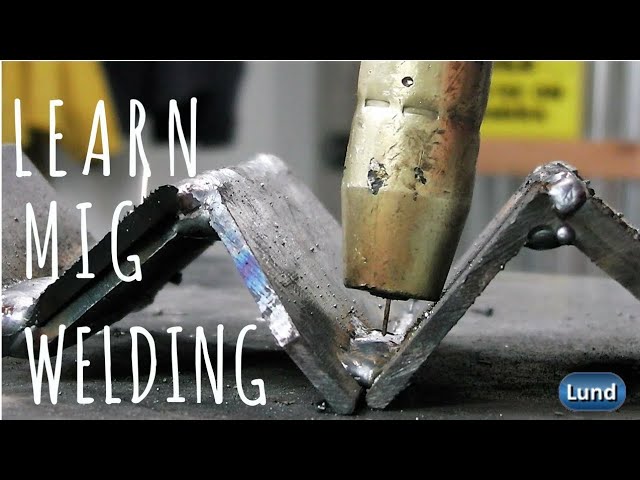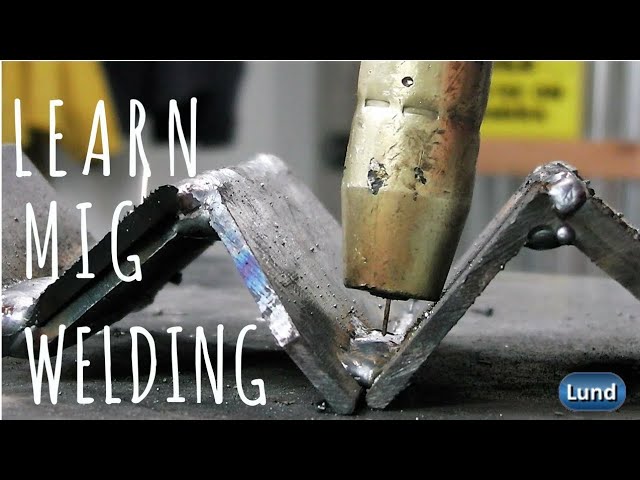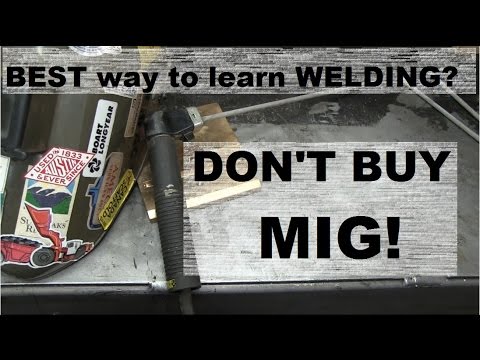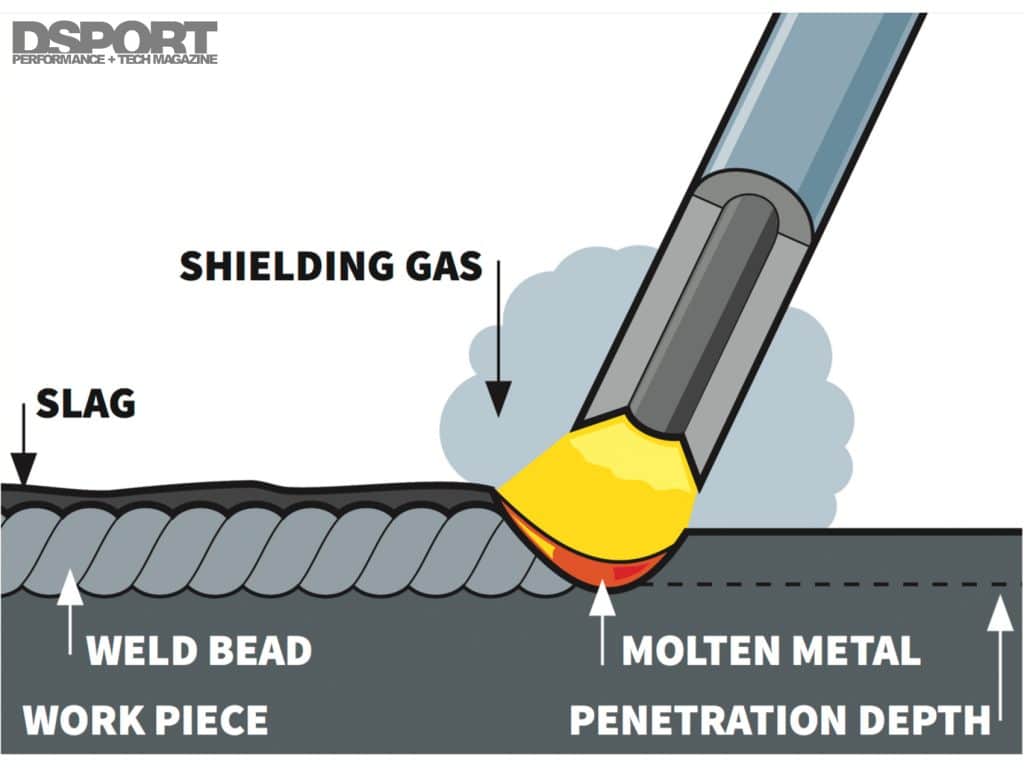So you’ve set your sights on becoming a skilled welder but unsure how to get started? Don’t worry because this article is going to guide you through the process of learning to weld step by step.
Whether you’re a complete beginner or someone with some experience, we’ll provide you with the essential information, tips, and resources to embark on your wedding journey.
By the end, you’ll be equipped with the knowledge to choose the proper welding technique, acquire the necessary equipment, and find the best avenues to practice and refine your skills. Let’s begin!
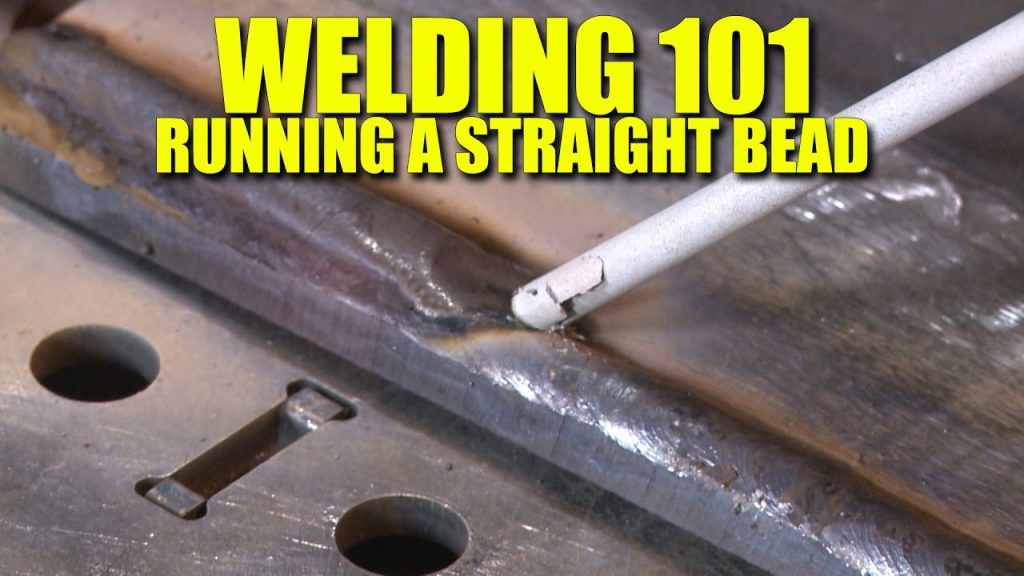
Types of Welding
Arc Welding
Arc welding is one of the most commonly used welding techniques. It involves creating an electrical arc between the base metal and an electrode to fuse them.
The intense heat generated by the arc melts both the metal and the electrode, creating a molten weld pool, which solidifies to form a strong bond. Arc welding is versatile and can be used with various metals and alloys, making it suitable for various applications.
MIG Welding
MIG (Metal Inert Gas) welding, also known as Gas Metal Arc Welding (GMAW), is a popular welding method that uses a continuous feeding wire electrode and a shielding gas to protect the weld pool from atmospheric contamination.
MIG welding is known for its high productivity and ease of use, making it suitable for amateur and professional welders. It is commonly used in the automotive, construction, and manufacturing industries.
TIG Welding
TIG (Tungsten Inert Gas) welding, called Gas Tungsten Arc Welding (GTAW), is a precise welding process using a non-consumable tungsten electrode and a separate filler rod.
TIG welding produces high-quality, clean welds with excellent control over heat input and minimal spatter. It is commonly used in aerospace, automotive, and artistic applications where aesthetics and precision are essential.
Flux-Cored Arc Welding
Flux-cored arc Welding (FCAW) is similar to MIG welding but utilizes a hollow flux-cored electrode instead of a solid wire.
The flux inside the electrode provides a shielding gas and helps produce a slag that protects the weld pool from impurities and contamination. FCAW is preferred for outdoor applications or environments where wind or drafts can affect gas shielding.
Oxy-Fuel Welding
Oxy-fuel welding (OFW) is a welding process that combines fuel gas and oxygen to create a flame that melts the base metal. This molten metal is then united using filler rods.
Oxy-fuel welding is mainly used for maintenance, repair, and artistic applications. However, it has become less commonly used in industrial settings due to the emergence of more efficient and precise welding methods.
Safety Precautions
Protective Gear
When it comes to welding, safety should always be the top priority. Before starting any welding project, ensure you have the proper protective gear.
This includes a welding helmet with a dark-tinted lens to protect your eyes from the intense UV light emitted during welding. Welding gloves, made from heat-resistant materials, will shield your hands from high temperatures and sparks.
Wear a welding apron made of durable flame-resistant material covering your torso and legs to protect against burns.
Work Area
Setting up a suitable work area is crucial for welding safety. Ensure your work area is clean, well-ventilated, and free from flammable materials.
Remove any clutter or tripping hazards to prevent accidents. It is highly recommended to have a dedicated welding table or workbench made of non-combustible material to secure your workpiece and provide a stable surface for welding.
Ventilation
Proper ventilation is essential to protect yourself from harmful welding fumes and gases. Welding produces toxic fumes, such as nitrogen oxides, ozone, and harmful metal vapors, which can be harmful if inhaled.
Ensure that your work area is well-ventilated with fans or exhaust systems that direct the fumes away from you. If working indoors, use additional ventilation methods such as opening windows or fume extractors to maintain a safe environment.
Fire Safety
Welding involves intense heat and sparks, making fire safety measures crucial. Keep a fire extinguisher nearby and ensure it is charged and in working condition.
Remove flammable materials from your work area and have a readily available fire-resistant blanket or extinguishing agent. If possible, have a designated fire watch personnel monitor the work area during and after welding operations.
Electricity Safety
Welding machines utilize high-voltage electricity, so electrical safety precautions must be taken. Ensure your welding equipment is grounded correctly, and inspect the power cables for any damage or wear.
Avoid working in wet conditions, as it increases the risk of electrical shock. Familiarize yourself with the safety features of your welding machine and follow the manufacturer’s guidelines for safe operation and maintenance.

Basic Welding Equipment
Welding Machine
A welding machine, often referred to as a welding power source, is the primary tool used for welding. It provides the electrical energy necessary to generate the welding arc.
Various welding machines are available, including transformer- and inverter-based machines. The choice of welding machine depends on the type of welding process and the material being welded.
Electrodes/Filler Metal
Electrodes or filler metal are consumable materials used in welding to create the molten weld pool and provide additional material to form the weld joint. The choice of electrodes or filler metal depends on the welded material and welding technique. Different electrodes have specific classifications and are designed for specific applications or materials, such as stainless steel, aluminum, or mild steel.
Welding Helmet
A welding helmet is an essential safety equipment that protects your eyes, face, and neck from the intense UV light and sparks generated during welding. Modern welding helmets are equipped with an auto-darkening filter that automatically adjusts the shade of the lens based on the arc brightness. This feature provides convenience and improves visibility, allowing you to see your workpiece before striking the arc.
Welding Gloves
Welding gloves are designed to provide heat resistance and protect your hands from sparks, hot metal, and potential burns. They are typically made from a combination of leather, Kevlar, and other heat-resistant materials. Choose welding gloves that fit well and provide skill, allowing you to handle welding equipment and workpieces without compromising safety.
Welding Apron
A welding apron is a protective garment that covers your torso and legs, shielding them from sparks, UV light, and hot metal. It is usually made of flame-resistant leather or heavy-duty cotton fabric. A welding apron helps prevent burns and keeps your clothes from catching fire. Choosing an apron that provides adequate coverage and fits comfortably is essential.
Understanding Welding Techniques
Preparing the Metal
Before starting any welding project, preparing the metal surfaces that will be welded together correctly is crucial.
This typically involves cleaning the metal to remove any dirt, rust, or contaminants that can affect the quality of the weld. Depending on the metal and its condition, you may need specific cleaning methods such as wire brushing, grinding, or chemical cleaning. Proper preparation ensures good fusion, minimizing the risk of defects.
Setting Up the Welding Machine
Each type of welding process requires specific machine settings and parameters. Familiarize yourself with the controls and functions of your welding machine.
Set the appropriate voltage, current, and wire feed speed according to the material thickness, electrode or filler metal type, and desired weld quality. Always follow the manufacturer’s guidelines and consult welding charts or reference materials to determine the optimal settings for your specific welding task.
Striking an Arc
Striking an arc initiates the electrical arc between the electrode and the workpiece. Maintaining a safe distance between the electrode and the workpiece, usually around 1/8 inch, is essential to prevent the electrode from sticking to the metal. To strike an arc, briefly touch the electrode tip against the workpiece and quickly pull it back. This action creates the arc and initiates the welding process.
Controlling the Welding Pool
Once the arc is struck correctly, it is essential to control the size and shape of the welding pool. The welding pool refers to the molten metal created by the arc’s heat.
Proper pool control ensures the weld penetrates the base metal and strengthens the bond. By manipulating the angle, speed, and distance between the electrode and the workpiece, you can control the size and shape of the pool, ensuring a consistent and quality weld.
Fusing the Metal
The final step in welding is to fuse the metal pieces. This is achieved by feeding the electrode or filler metal into the welding pool, creating a molten bond with the base metal.
Maintaining a steady and consistent motion is essential, moving the electrode along the joint to ensure proper metal fusion. The speed and technique will vary depending on the welding process and the joint configuration.
Practicing Welding Joints
Butt Joint
A butt joint is formed by placing two pieces of metal together, edge to edge. It is one of the most common types of joints used in welding.
To weld a butt joint, the edges of the metal pieces are beveled or prepared appropriately and then welded along the entire joint length. Proper alignment, fit-up, and control of heat input are crucial in achieving a strong and structurally sound weld.
T-Joint
A T-joint, as the name suggests, is formed when one piece of metal is welded to the surface of another metal, creating a T-shaped configuration.
Welding a T-joint requires proper positioning, alignment, and heat control to ensure proper fusion along the joint’s horizontal and vertical axes. It is common in structural welding, where two members intersect at a 90-degree angle.
Lap Joint
A lap joint is formed by overlapping two metal pieces and welding them together at the point of overlap. It provides good strength and is commonly used when joining thin sheets or plates.
Proper preparation and fit-up are essential to ensure adequate penetration and fusion along the lap joint. Techniques such as stitch welding or plug welding may reinforce the joint further.
Corner Joint
A corner joint is formed when two metal pieces intersect at a 90-degree angle. It is commonly used to construct boxes, frames, or similar structures.
Welding a corner joint requires careful preparation, alignment, and control of heat input. Proper fusion and penetration at the corners are crucial to ensure a structurally sound weld.
Edge Joint
An edge joint is created when two metal pieces are aligned parallel to each other, with the weld running along the edge of the joint.
It is commonly used to join metal plates or sheets end-to-end. Careful preparation, fit-up, and heat control are essential to achieve a smooth and robust weld at the edge joint.
Weld Defects and Troubleshooting
Porosity
Porosity is a common welding defect characterized by small cavities or voids within the weld. It is caused by trapped gases, such as hydrogen or nitrogen, being released during solidification of the molten metal. Porosity weakens the weld and reduces its integrity. To prevent porosity, ensure that the metal surfaces are clean, use the appropriate welding technique and settings, and avoid excessive moisture or contamination during welding.
Cracks
Cracks in welded joints can occur due to various factors, including excessive heat, stress, or poor welding technique. Different types of cracks exist, such as longitudinal, transverse, and crater. To prevent cracks, ensure proper heat control, use appropriate preheating or post-weld heat treatment if required, and select the correct welding procedure and filler metal for the specific application.
Incomplete Fusion
Incomplete fusion occurs when the weld does not penetrate or fuse with the base metal properly. This defect weakens the joint and can lead to structural failure. Improper welding techniques, poor fit-up, or the wrong parameters for the specific welding process can cause incomplete fusion. Ensure proper joint preparation, maintain the correct angle, speed, and distance between the electrode and workpiece, and adjust the welding settings to achieve proper fusion.
Undercut
Undercut is a groove or depression that forms along the edges of a weld joint. It occurs when the molten metal fails to fill the joint adequately and instead flows away, leaving a concave groove. Undercut weakens the joint and creates stress concentration points. To prevent undercut, ensure proper heat control, maintain the correct electrode angle, and consider adjusting the welding parameters or joint design if necessary.
Excessive Spatter
Spatter refers to the tiny, undesirable droplets of molten metal expelled during welding and can land on surrounding surfaces. Excessive spatter can increase cleanup time and affect the weld’s appearance and quality. To minimize spatter, ensure proper electrode angle, use the correct shielding gas and wire feed speed, and consider using anti-spatter compounds or sprays.
Welding Positions
Flat Position
The flat position is the most common and easiest welding position. It involves welding on a horizontal surface, with the weld pool facing upwards. Gravity helps hold the molten metal in place, making it easier to control the weld pool and ensuring proper fusion. The flat position is commonly used for fillet welds, lap joints, and butt joints.
Horizontal Position
The horizontal position is when the welding is done along a vertical joint, with the weld pool flowing from top to bottom. Welding in the horizontal position can be more challenging due to the tendency of the molten metal to sag or move. Proper manipulation of the electrode angle and travel speed is necessary to ensure proper fusion and prevent the weld pool from getting too broad or concave.
Vertical Position
The vertical position involves welding on a vertical or nearly vertical surface, with the weld pool flowing downwards. Welding in the vertical position requires careful control of the weld pool to prevent it from sagging or falling. Proper technique, including shorter arc lengths and slower travel speeds, is essential to achieve good fusion and uniform reinforcement along the joint.
Overhead Position
The overhead position is the most challenging welding position due to the gravity pulling the molten metal downwards. Welding overhead requires high skill and control to prevent the weld pool from sagging or falling. Proper manipulation of the electrode angle, travel speed, and welding techniques, such as weaving or backstepping, are crucial to achieve adequate fusion and ensure a sound weld.
Understanding Welding Symbols
Basic Symbols
Welding symbols are graphical representations that communicate welding requirements on engineering drawings and blueprints. Basic welding symbols include the reference line, arrow, finish, and supplementary symbols. These symbols indicate the type of weld, weld size, location, and other essential details. Familiarizing yourself with basic welding symbols is essential for understanding and interpreting welding instructions and specifications.
Reference Line
The reference line is a horizontal line that serves as the foundation for welding symbols. It is drawn either above or below the arrow and represents the side of the joint where the weld is to be applied.
Leader Lines
Leader lines are lines connected to the arrow pointing to specific drawing features requiring welding. They help indicate the location or length of the weld on the workpiece.
Arrow and Other Symbols
The arrow in a welding symbol points to the joint to be welded and provides information regarding the specific weld characteristic, such as weld type, size, or other details. Additional symbols, such as circles, triangles, or dots, may be used to provide further instructions or specifications.
Location and Size
Welding symbols also include indicators for the location and size of the weld. These can be represented by numerical values, letters, or specific symbols, depending on the required dimensions and specifications.
Learning from Resources
Online Tutorials
Online tutorials and video resources can be valuable for learning to weld. Many websites and platforms offer step-by-step tutorials, instructional videos, and forums where you can seek guidance and interact with experienced welders. These resources provide the flexibility to learn at your own pace and can cover a wide range of welding techniques, safety precautions, and troubleshooting tips.
Books and Manuals
Books and manuals are another excellent resource for learning to weld. They provide in-depth technical information, explanations of welding processes, and guidance on various welding applications. Look for reputable books authored by industry experts or published by recognized welding organizations to ensure reliable and accurate information.
Community College Courses
Many community colleges and vocational schools offer welding courses for individuals interested in gaining formal education and certification in welding. These courses provide a structured curriculum, hands-on training, and access to experienced instructors. Attending a community college course can be a great way to gain comprehensive knowledge and practical skills in welding.
Trade Schools
Trade schools specializing in welding offer comprehensive programs to provide focused and intensive training in welding techniques. These programs often include classroom instruction, hands-on practice, and exposure to real-world welding scenarios. Trade school graduates are typically well-prepared for entry-level welding jobs and may have the opportunity to earn industry-recognized certifications.
Apprenticeships
Apprenticeships offer a unique learning opportunity for those interested in becoming skilled welders. Apprenticeships involve a combination of on-the-job training and classroom instruction, allowing you to learn directly from experienced welders while earning a wage. Apprenticeships typically last several years and can lead to industry-recognized certifications and long-term career opportunities in welding.
Gaining Hands-On Experience
Joining a Welding Workshop
Joining a welding workshop or class led by experienced welders can provide valuable hands-on experience.
These workshops often have access to welding equipment and tools, allowing you to practice various welding techniques under guidance and supervision. Additionally, being part of a workshop offers the opportunity to network with other aspiring welders and professionals in the field.
Participating in Fabrication Projects
Participating in fabrication projects on a small scale or as part of a larger team can enhance your welding skills and knowledge. Look for opportunities to collaborate with others who require welding services, such as artists, artisans, or fabricators. These projects expose you to real-world welding challenges and provide practical experience in different welding techniques and applications.
Attending Welding Competitions
Welding competitions are exciting events and excellent platforms for showcasing your welding skills.
Participating in these competitions allows you to test your abilities against other skilled welders, gain valuable feedback from industry professionals, and experience the pressure and time constraints typical of real-world welding projects. Competitions also offer networking opportunities and a chance to learn from experienced competitors.
Working on Personal Projects
Working on personal welding projects can be a valuable way to practice your skills and explore different techniques.
Whether building a small metal structure or repairing an item, personal projects provide the freedom to experiment, learn from mistakes, and gain confidence in your welding abilities. Use online resources, books, and guidance from experienced welders to ensure proper technique and safety.
Shadowing Skilled Welders
Shadowing skilled welders who have years of experience can provide you with valuable insights and tips. Contact local welding businesses, fabrication shops, or construction sites and ask if you can observe and assist experienced welders.
By shadowing them, you can learn their techniques, observe their workflow, and gain firsthand knowledge of the challenges faced in the welding profession.


